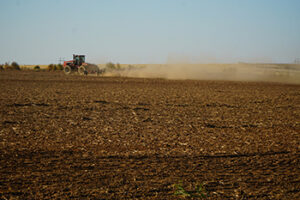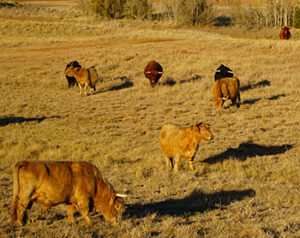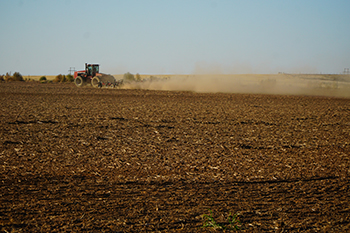By Jacob Ervin, Student Reporter
Rain makes corn, but no rain doesn’t make wheat.
This is an issue many local farmers faced as they planted their winter wheat crops this autumn.
Western Oklahoma has endured exceptional drought conditions since the beginning of 2022 that are unlikely to end until at least March 2023, according to the National Weather Service’s Climate Prediction Center.
Even though Woods County has had some precipitation in the last two weeks, it hasn’t been enough. The Palmer Drought Severity Index still listed most of Woods County as experiencing moderate to severe drought as of Nov. 5. The Panhandle was still in the extreme drought category.

While drought may not seem like anything new to the average Oklahoman, the current drought is considered to be the worst since 2011. The severity of the drought could devastate wheat yields for local farmers when harvest begins next year, a repeat of this year.
But in spite of the dry forecast, many local farmers planted their fields regardless in order to qualify for crop insurance, allowing them to financially survive the economic strain that drought brings with it. State officials have allocated more than $20 million for the Emergency Drought Relief Fund, which helps fund the drilling of water wells, among other drought response measures.
The drought has not only harmed farmers, but will likely affect the local economy and consumers across the country.
“The price of wheat has gone from very low to quite high over the past year,” said Dr. Tracy Beedy, assistant professor of agriculture at Northwestern Oklahoma State University.
Beedy said the increase in wheat prices also will raise the price of wheat products such as bread across the country. Drought will affect the price of beef for consumers, too.
“As our water on the landscape dries up, farmers begin having to move cattle around … and farmers will start selling off cattle,” Beedy said.
This influx of beef may bring prices down for consumers in the short term, but as cattle herds are thinned, the price will see even further inflation in the long run.
A primary cause of the current drought conditions is the result of the La Niña weather cycle. During La Niña, equatorial waters are cooler than usual and force the jet stream more northward, which leads to the South and Southwest being much drier than normal.
The equatorial water temperatures are likely to stay cool for a third straight year, causing what is known as a Triple Dip, according to the Climate Prediction Center. If this occurs, it will be the first Triple Dip since 2001 and will likely cause further drought in the Great Plains and High Plains regions.

One of the few bright spots for Oklahomans may be that the drought is unlikely to lead to Dust Bowl conditions seen in the 1930s thanks to new and improved farming techniques.
“We are not having half the population moving back east to live with relatives,” Beedy said, as happened in the 1930s. “We are not dying of dust pneumonia.”
She points to practices such as better farm equipment, no-till farming and the Conservation Reserve Program. These practices help reduce the amount of dirt that is exposed to the wind as the land dries up.
However, Beedy warned that if extreme levels of drought were to carry on for another year or longer, Dust Bowl conditions could occur. While this may be unlikely, the risk of a Triple Dip La Niña makes an extended drought not outside the realm of possibility and something many meteorologists, economists and farmers alike will be keeping their eyes on, Beedy said.
The drought has eased in the last two weeks, however, thanks to rainfall across the region. According to the Mesonet rainfall table, as of Nov. 7, Alva had received .78 of an inch of rain in the last two weeks.

